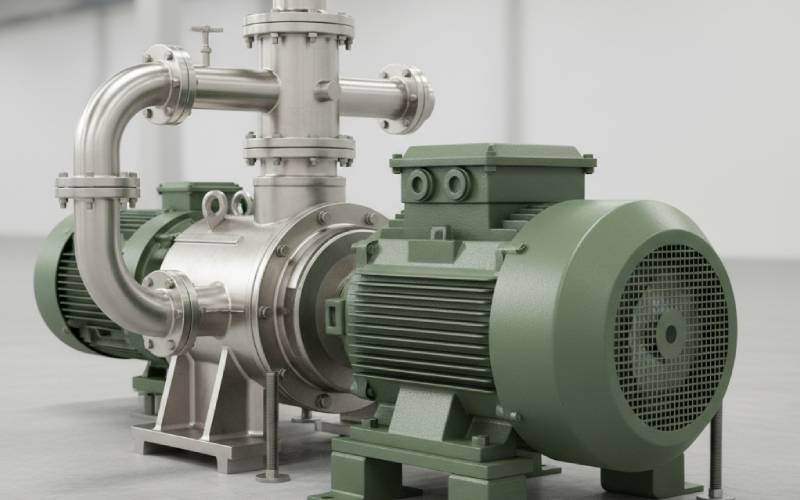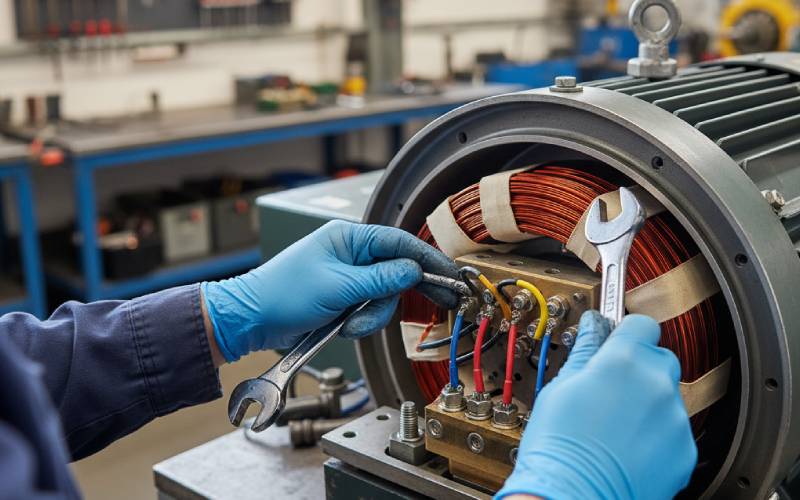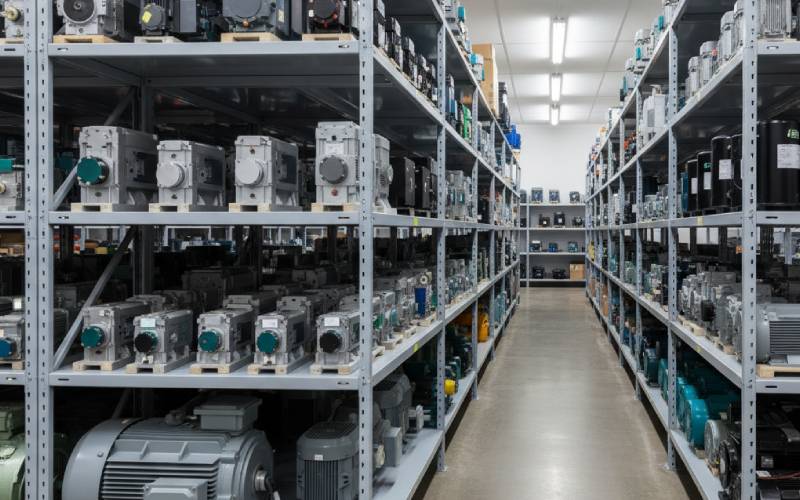Let Sino's Lamination Stacks Empower Your Project!
To speed up your project, you can label Lamination Stacks with details such as tolerance, material, surface finish, whether or not oxidized insulation is required, quantity, and more.

Picking the right industrial motor can seem tricky. There are many motor types, and they all work in a different way. This guide helps make it easy. We will talk about the most common kinds of motors used in business. You will find out what makes each motor special. Reading this will help you choose the best motor for your work. A smart choice saves money, uses less energy, and keeps your machines working well.
An industrial motor is a machine that turns electrical power into movement. This movement is used to run almost everything in a factory or workplace. Think about a conveyor belt, a big fan, a pump, or a robot. An electric motor is like the heart of that machine. The motor gets power from a supply. It uses that power to rotate a shaft. This turning action is what does the work.
Picking the right industrial motor is very important. If you choose the wrong motor, it can waste power, break down a lot, or not do its job right. A motor that is a good fit will run for a long time. It will work well and use just the right amount of power. This is why it is helpful to know about different motor types. Each type of motor is good at a certain kind of job. This guide will help you get to know each industrial motor.
There are a few ways to group motors. The most popular way is by the kind of electrical power they use. This gives us two big groups of motor types.
We will look at each type of motor more closely. You will learn about the different kinds of AC and DC motors. Knowing these two main groups is the first step. It helps you pick the right motor for any application. Your choice of electric motor depends on the power you have.

An AC motor is a type of electric motor. It uses alternating current to work. An AC motor has two main parts. The part on the outside is called the stator. The part on the inside is called the rotor. The stator has a coil of wire. When AC power goes through this coil, it can create a magnetic field that spins around. This spinning field is what causes the rotor to turn. The turning rotor is the part that does the work.
There are two main kinds of AC motors: the induction motor and the synchronous motor. Both types of motors are used often in industrial work. They are usually very dependable and do not need a lot of care. You can find this type of motor in things like pumps, fans, and conveyor belts. The simple setup of an AC motor makes it a great pick for many different jobs. The induction motor is the most widely used motor.
The AC induction motor is the most common industrial motor in the world. It is simple, tough, and does not cost a lot. This motor is a type of AC motor. It works when the magnetic field in the stator causes the rotor to spin. The main thing about an induction motor is that the rotor does not have wires connected directly to it. The magnet force “induces” it to turn. This means there are not as many parts that can wear out.
There are two kinds of AC induction motors. They are based on their power supply: single phase and three phase. A single phase motor is for smaller tasks. A three phase motor is for bigger, industrial machines. The rotor in most induction motors is a “squirrel cage” rotor. It is built with metal bars that look like a cage for a squirrel. This squirrel cage design is very strong and dependable. AC induction motors are a great motor you can use for many things.
| Motor Feature | Single Phase Induction Motor | Three Phase Induction Motor |
|---|---|---|
| Power Supply | Uses single phase AC power | Uses three phase AC power |
| Size | Smaller, for light jobs | Larger, for heavy jobs |
| Starting Power | Lower starting torque | High starting torque |
| Common Use | Home tools, small machines | Industrial pumps, fans, big machines |
This type of industrial motor is a very good value. For many jobs, it is the ideal motor. Many motors are commonly used, but this one is a real hard worker. A premium efficiency induction motor can save a lot of energy.
Synchronous motors are another type of AC motor. The main difference is their speed. The rotor of an induction motor spins a bit slower than the magnetic field. But in synchronous motors, the rotor spins at the very same speed as the magnetic field. They are “in sync.” That is how they got the name synchronous. This special feature makes them perfect for jobs that must have a constant speed.
To get this constant speed, the rotor in synchronous motors is made in a special way. It can be a permanent magnet. Or it can be an electromagnet that uses DC power. The rotor and the stator field are locked together. Because of this, the motor’s speed does not change. It stays the same even if the work it’s doing gets a little heavier. Synchronous motors are also known for using power very well and for having a good power factor. This type of synchronous motor is a good motor for jobs that need to be exact.
Yes, DC motors are still a very smart pick for some jobs. The best thing about DC motors is that they let you control speed and torque easily. It is simple to change the speed of a DC motor. You just change the voltage of the DC supply. This makes them great for an application where the speed has to change a lot. A DC motor can also give a strong push to get started. We call this high starting torque. This is helpful for moving heavy things from a complete stop.
The traditional DC motor has parts called a brush and a commutator. The electric current goes through the brush to the commutator. The commutator is like a switch. It changes the direction of the current in the coil. This is what makes the motor rotate. The brush and commutator can wear out after a while. This is a downside because they need care and they create friction. We call this type of motor a brushed DC motor. These DC motors are very strong.
You need servo motors when your machine has to be very, very exact. Servo motors are not just one type of motor. They are a group of parts that work together. This group includes a motor, a controller, and a feedback device. The feedback device tells the controller the exact spot and speed of the motor shaft. This makes a “closed loop” system. The controller can make very small changes. This is to make sure the motor is in the perfect spot.
This ability to be exact makes servo motors perfect for robotics, CNC machines, and automation. In manufacturing, a servo motor can put a part in the perfect spot, time after time. They are great at controlling movement. Servo motors can be AC motors or DC motors. They are made for jobs where controlling the position and speed is the most important thing. An industrial motor like a servo can automate a whole factory.
A brushless DC motor is a more modern kind of DC motor. Like its name says, it does not have a brush or a commutator. This is a big plus. With no brush to wear out, these motors do not need to be fixed as often. They also use power better because there is no friction from a brush. The motor also runs with less noise. This type of motor is very well-liked.
So, how does a brushless motor do its job? Instead of a mechanical commutator, it has an electronic controller. The controller gives power to the different coils in the stator at the perfect time. The rotor is often a permanent magnet. The controller has sensors. They tell it the rotor’s position. Then, it switches the power to keep the rotor spinning. A brushless DC motor gives you the same great speed and torque control as a DC motor, but without the need to care for a brush. This motor type is in many new devices.
Picking the right industrial electric motor depends on the job you need it for. You have to think about a few important things to find the best motor. Answering these questions will help you choose the right industrial motor.
Here is an easy chart to help you think about different motor types and their best use:
| Motor Type | Best For | Main Good Thing |
|---|---|---|
| AC Induction Motor | Many different jobs, pumps, fans | Simple, dependable, low cost |
| Synchronous Motors | Jobs needing exact timing | Runs at one steady speed, uses power well |
| Brushed DC Motor | Jobs where speed changes, high power | Great starting power and speed control |
| Brushless DC Motor | Running a lot without much care | Uses power well, lasts long, quiet |
| Servo Motors | Robots, automation | Very exact movements and control |
This information will help you choose the right motor. The correct motor will make your work go better. A motor is a very important part of your machinery.

Good care helps your industrial motor work well for a very long time. The amount of care it needs depends on the motor type. A simple motor like a squirrel cage induction motor needs very little care. A brushed DC motor needs more looking after. Doing regular motor testing is a smart thing to do.
Here are some simple care tips for any industrial motor:
Taking care of your motor on a schedule helps stop big problems. It makes the motor last longer and saves you from having to stop work. A little bit of care for your motor makes a big difference. This is true for every industrial motor type. A good care plan for your motor is a wise choice.